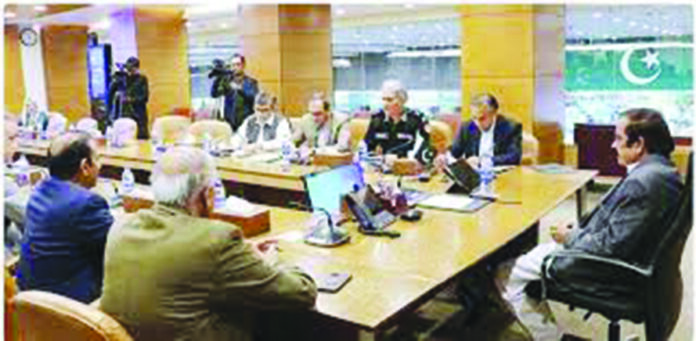Pakistan’s security landscape has undergone a significant change in recent years. The said change is characterized by the emergence of new terrorist groups, the growing sophistication of already existing groups in their operations, and propaganda. This alarming trend is underscored by the surge in terrorist attacks across the country since 2021. However, amidst this changing security landscape, where the terrorists are smart, the country’s premier institution for countering terrorism, the National Counterterrorism Authority (NACTA) needs to be smarter. However, its present response is lacklustre at best.
Since August 2021, Pakistan’s security landscape has seen the emergence of new militant groups like Tehreek-e-Jihad Pakistan (TJP) and Ansar-ul-Islam (AI). At the same time, established groups like TTP have strengthened and expanded their operations. For instance, since August 2021, more than 40 groups have announced a merger with the proscribed group. Moreover, the group’s propaganda has become increasingly sophisticated with the group’s mouthpiece Umar Media producing audio, video clips, podcasts, and text materials in half a dozen languages including Pashto, Urdu, English, Baluchi, Dari, Persian, and Arabic.
Another disturbing trend in the country’s evolving security landscape is the focus of militant groups on the recruitment of women within their respective organizations through propaganda. For instance, TTP has just recently started a separate Urdu-language monthly magazine, Banat-e-Khadijatul Kubra, aimed at recruiting women.
Similarly, in recent years, Baloch insurgents have employed female suicide bombers. The Baloch Liberation Army (BLA) propaganda arm, Hakkal, has published several articles and reports eulogizing these female suicide bombers to boost women’s recruitment. Additionally, the arrest of five female Islamic State Khorasan Province militants in Lahore and Sheikhupura, in September 2023 highlights ISKP’s active recruitment of women from urban centres of Pakistan. All these trends point toward a rapidly changing security landscape in Pakistan.
In sharp contrast to this growing sophistication, reach, and recruitment efforts exhibited by terrorist organizations, NACTA, the country’s primary counterterrorism agency, seems largely unfocused and ineffective. Originally established in 2009, NACTA was originally perceived as a civilian-controlled, supervising, and monitoring body that would coordinate the state’s counter-terrorism efforts. However, right from its inception, concerns have been raised over its efficiency and its capacity to carry out the responsibilities assigned to it.
Pakistan faces an increasingly complex security landscape that demands a robust, proactive, and adaptive strategy. The rise of new militant organizations, coupled with the growing sophistication of existing groups, presents a significant challenge. NACTA’s shortcomings, including limited research and an inadequate counter-narrative effort, undermine the nation’s ability to effectively address these threats.
To get an insight into how well or badly NACTA has performed since its inception, one can do the discourse analysis by considering the titles of editorials and opinion articles published in various newspapers over the last decade regarding the agency. Some of these titles are Nacta failure, saving Nacta, reviving Nacta, reactivating Nacta, revamping Nacta, and the case for Nacta. The titles of the editorials are reflective of the organization’s performance.
Some of the key responsibilities of NACTA include: carrying out up-to-date research on topics relevant to terrorism and extremism, and to develop a counternarrative against extremism and militancy in local languages, and disseminating it through media and other platforms to get it to the wider audience.
Though in the realm of research, the organization has made some strides in recent years, especially with the launch of its “Pakistan Journal of Terrorism Research” (PJTR) in 2019, it is still plagued by certain shortcomings. For instance, one of the major shortcomings is that nearly all the research papers published in the journal heavily relied on online available secondary sources which limits its potential to contribute new insights to the national discourse on terrorism and extremism.
This reliance on secondary sources likely stems from the fact that these papers are contributed by authors not affiliated with NACTA. This means they lack access to the valuable primary sources available to NACTA officials, such as ground intelligence reports and other key materials.
Another issue with NACTA’s research output is a tendency to focus on topics that have already been extensively explored, resulting in a lack of originality and relevance. For example, the latest issue of the PTJR includes titles like “Regional Implications of US Withdrawal from Afghanistan,” “India State Terrorism in Perspective,” and “Mainstreaming Tehreek Taliban Pakistan.” While these are undoubtedly important issues, they do not offer fresh insights into the changing security landscape of the country nor it helps in mitigating the risks this changing security landscape poses to the country’s national security.
As far as the second primary responsibility of NACTA is concerned, which is to develop a counternarrative in the local languages and to disseminate it, its performance is also lacking in this area. An examination of the organization’s official website reveals a striking absence of such materials. This failure is particularly alarming in light of Pakistan’s evolving security landscape, as aforementioned, where militant groups exploit various languages in their propaganda campaigns. Without an effective counter-narrative from NACTA, extremist propaganda risks going unchallenged, which can potentially lead to increased radicalization and recruitment.
Pakistan faces an increasingly complex security landscape that demands a robust, proactive, and adaptive strategy. The rise of new militant organizations, coupled with the growing sophistication of existing groups, presents a significant challenge. NACTA’s shortcomings, including limited research and an inadequate counter-narrative effort, undermine the nation’s ability to effectively address these threats.























